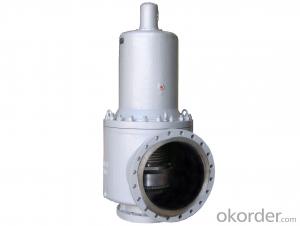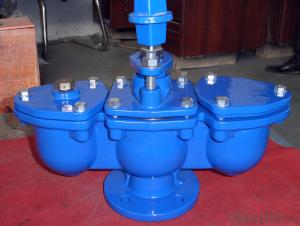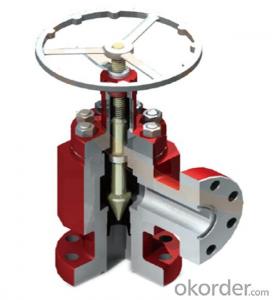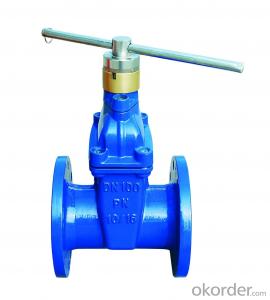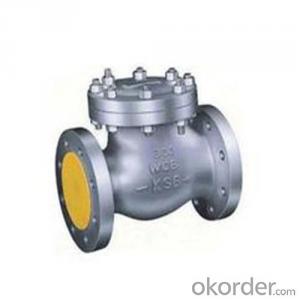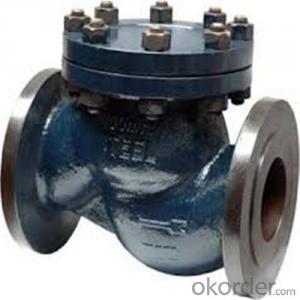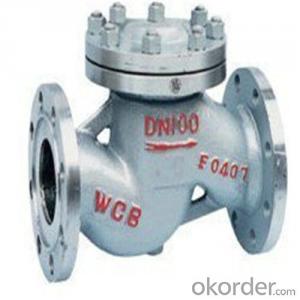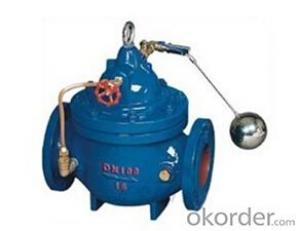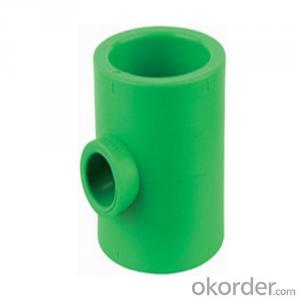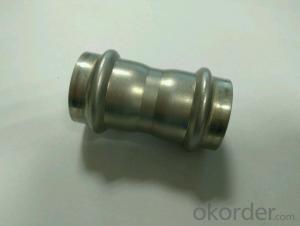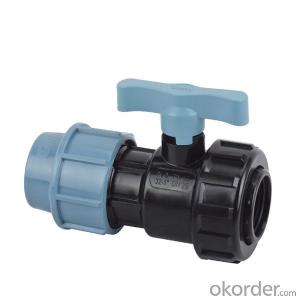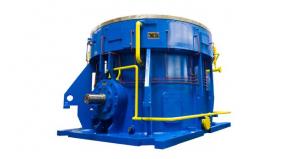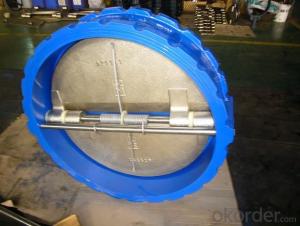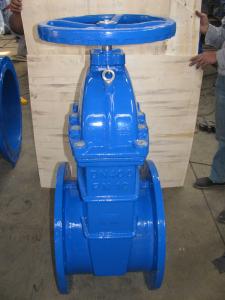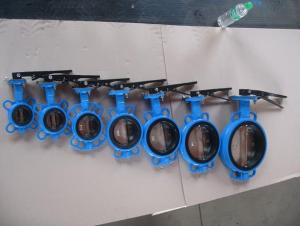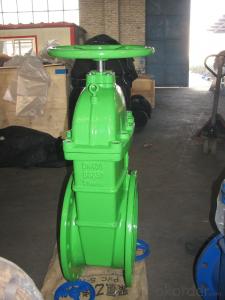High Performance WCB/304/316/CF8M Pressure Relief Valve
- Loading Port:
- China Main Port
- Payment Terms:
- TT OR LC
- Min Order Qty:
- -
- Supply Capability:
- -
OKorder Service Pledge
OKorder Financial Service
You Might Also Like
Specifications
1. High Performance2. Competitive Price
3. Prompt Delivery
4. Perfect After-sale Service
High Performance China Pressure Relief Device .
Application:
A pressure relief valve (PRV) is a safety device that relieves overpressure in a vessel or system. When the pressure of vessel or system increased beyond the specified design pressure or maximum allowable working pressure, PRV will be opened automaticly to relief the overpressure for proteding the vessel or system. The PRV will be closed if the pressure reached specified design pressure so that to ensure the normal operation and protect the vessel or system.
Our Pressure Relief Valve has been designed and manuractured according to following Standard:
♦ ISO 4123-1 Safety Devices for Portection Against Excessve Pressure
♦ API STD 526 Flanged Steel Pressure Relief Valves
♦ API STD 527 Seat Tightness of Pressure Relief Valves
♦ ASME Boiler and Pressure Vessel Code Section VIII Division 1, Rules for Construction of Pressure Vessels
Peformance:
♦ Type: Conventional, Bellows
♦ Size:1" D 2"- 8" T 10"
♦ Class:150lb~2500lb
♦ Temperature:-268~+538°C
♦ Fluid: Gas, Steam, and Liquid
♦ Material: Carbon steel, Stainless steel, Alloy steel
♦ The allowable tolerance of the set pressure: ≤±3%
♦ Overpressure: ≤10%(gas)/≤20%(liquid)
♦ Blowdown: ≤10%(gas)/≤20%(liquid)
♦ Tightness: conforms to API STD 527
Features:
♦The solid nozzle is screwed into the body, which makes the maintenance easy.
♦ The shape of the disc holder has been designed to enhance the effect of the fluid thrust for an instant lift of the disc.
♦ Blowdown control is provided with adjustable nuzzle ring only.
♦ The adequate terials and clearance between disc holder and guide , spindle and adjusting screw assures disc to lift successfully.
♦ The surface of both the disc and the nozzle seat are deposited with Stellite. Excellent flatness and surface finish of the seating surfaces by precision machining and lapping assure pressure relief valve to have high degree of seat tightness and long using life.
♦ The bellows of balanced bellows pressure relief valves can not only avoid and effect of variable back pressure in the system , but also protect spring and other trim components from corrosive media.
♦ Materials are chosen carefully , and the manufacture of the spring and the bellows has strict technological process. Each of them is tested and checked strictly.
- Q:I was adding air to my bike tires and the valve became loose. Do I need a new tire or is there a way to tight?
- It sounds as if you just need a new inner tube if there is a valve problem. New tubes cost only a couple of ??? each, and it's worth getting a couple of spares and a puncture repair kit if you don't have one. If you have some mates who also cycle, it can be worth getting a box of inners and splitting the cost. That way you get the discount and some spares. Check that you get the right size for your tyres.
- Q:I have a trumpet, but unintentionally dropped it. When I started playing, I noticed that the first valve was very sticky. Therefore, I decided to put some oil on it. Despite the oil helping a lot, the valves are still sticking a bit when I push them down, as the key still stays in the valve for a few second before coming up again. It could possibly have a slight dent, but when I opened the valve, I did not see any damage at all. Are there any suggestions? And if it is dented how much would it cost to repair it?
- I would wager there is no dent, but the valves aren't quite straight. They have to be straight. Don't know what it will cost to fix, they may have to be replaced.
- Q:I have a question about my car. The mechanic told me that my valve body needed to be rebuilt. However I read that the valve body is a sensor that tells the car when to shift gears. Now my car is a semi automatic so I can shift gears myself! I was wondering if someone could tell me whether it was still necessary to rebuild it if I'm going to be shifting gears myself? I just don't want to mess up the valve body even more and eventually have to get a whole new transmission!
- Its an electrically shifted automatic. The valve body is not a sensor it is the valving system that sends fluid to different parts of the transmission to shift gears. The solenoids on the valve body move the valves dependant on what the computer tells it to do. The paddles or shifter you have do not go to the transmission but to the ECU and the ECU decides what to actually do with the transmission. It does not matter if you shift it or let it do it its self if the transmission is going out it needs work or rebuilt, it WILL fail sooner or later and leave you stranded. So you either need to get it rebuilt or get another transmission. If you drive it until it fail you will need another unit, if you fix it now yours might be able to be saved.
- Q:When you regulate flow with a valve in a fluid circuit, obviously the flow changes. But mathematically, it changes in function to what? the minimum cross-sectional area? I mean it has to have something to do with some integral of sth (since a valve can change the cross-sectional area of a portion of the tube with length of almost zero and the flow would still change dramatically). I have no idea how to work this through. Can you tell me what changes when you close a valve, which makes the total flow change?Please answer asprecisely as possible, this is for a college essay! thanks in advance!
- A valve reduces the cross-section of the pipe. .
- Q:My furnace cut out about a year ago. The hvac guy i used told me the gas valve was no good and that the flu was partially blocked. I cleaned out the flu, he replaced the gas valve ($700+) and it worked great for a year. Today the furnace does not fire up. Pilot is working. I cleaned out the flu (there was definitely quite a bit of debris, so that was probably the cause for the shut off) .... The flu is now clear, but when i turn the system back on the thermostat calls for heat, but there is no gas flow to the burner... could the valve have failed that quick, or should i be looking at something else like the CO sensor or something... just looking for some direction before shelling out another 700 bucks... Thanks in advance for any ideas or assistance....
- There are a few possibilities. The valve runs on a low voltage line. The low voltage is provided by a transformer. It it possible the transformer is bad. Be sure the power switch to the furnace is on. (should be on the side of the furnace. Easy way to check is (on the thermostat) turn the fan switch from auto to run. The blower fan should come on. Check that the gas valve is in the ON position.(if you have had to light the pilot it may still be in pilot position.) Another possibility is a clogged gas line. If you have an older home rust can accumulate inside the iron gas lines. Where the gas line attaches to the furnace there should be a drip leg. This is a short length of pipe that points down with a cap on it from the TEE that goes into the furnace. This short piece of pipe is to catch any moisture or rust that comes thru the line. First TURN OFF the gas at the shut off in the pipe it's self. This is a quarter turn valve. When the handle is in line with the pipe the gas is on. When it is opposite the pipe (pointing out to the side) the gas is off. After turning the gas off, remove the cap from the bottom of the drip leg to remove any accumulation.USE PIPE DOPE not teflon tape when putting the cap back on.Turn the gas valve back on and check for leaks.
- Q:Hi, I am a junior in high school and I play the trumpet. For the past week or so my 1st valve has been odd. It gets stuck badly when it hits all the way to the bottom, and I can't seem to get it to stop. Normally when valves are sticky I just use some valve oil and it helps a lot. But it doesn't seem to work this time. It is a Bach if that helps. I think there are other types of valves so I'll say that there is a spring inside from like the middle to top. If you could help me out that would be great! Thanks =)
- Instead of valve oil, try kerosine. This is no joke. I found that kerosine cleans the **** out of the valves, and makes for smoother valve action. Put about a 1/2 pint in to a a peanut butter jar, and you can let the valves soak a for a few seconds before you put them back in. i got this tip from a trumpet player who played professionally in a dance band.
- Q:where are the proportion valves located on a 1991 buick skylark?
- definite they do pass undesirable! It sounds like this is your difficulty. you are able to attempt bleeding the proportioning valve with a brake bleeding gun, making optimistic to open each valve then re-bleed the brake gadget this would get rid of the potential for a air bubble in the proportioning valve. I even have replaced probable ten or twelve of those issues in my ventures.
- Q:Okay, I got a 347 stroker and I noticed a spot that was leaking under one of my valve cover gaskets. So I went ahead and bought new gaskets. But before I replaced the gaskets I noticed that my valve cover bolts wasn't tight. So I basically went out for nothing and get new gaskets. Anyways since I couldnt return them, I went ahead and changed the gaskets. And I tightened all of them pretty tight. And I noticed that I still have an oil leak at the same valve cover gasket at the same place. Why is this? I also used cork gaskets, did I tighten them too hard? How hard should you torque valve cover bolts/
- I have see one time that a car had blown valve cover gasket. It leak very well and Touch on Exhaust Madifold. It cause fire. Engine is High milages. Engine make blow by through piston and cylinder. Bypass gas cause Press gaskets or seals to make oil leaks. Other thing is loose vaccum for brakes. It make hard to press brakes. Like air leak. OR Rubber valve cover gasket getting dry up, and start brittles. Its ten years old, So go and replace valve cover. If you know how, That will be great. Do it asap Than Sorry.
- Q:I know absolutely nothing about cars. My AC stopped working, I had a new air compressor, drier, expansion valve put on. It was also vacuumed out. Problem is it will not take a recharge, and there is no refrigerant in it at all. But it keeps reading high pressure, I don't know the readings I was told it is reading high, and will not take a recharge. Someone on yahoo answers suggested it might be the Schrader valve is this a problem that it can cause if it's bad that it will not let you recharge, and read a high pressure reading? Is there a Schrader valve for the low pressure valve amp; the high pressure valve or is there just one? I have a 96 Dodge Stratus ES. Thank you for any help or ideas.
- After replacing all these parts it should have corrected any restriction. If it was vacuumed out there should be negative pressure in the system and accept a charge through the low side port. If you did not see the actual work done im wondering if the parts were indeed changed?
- Q:In December I got a new John Packers Bb Cornet and it was fine to start with. But recently the valves have been sticking, especially the 1st and 2nd ones. Even when I put valve oil on them they stick. It's really starting to annoy me, is there any else I can do to prevent this?
- If the valves continue to stick after being oiled, then it's time to clean your horn. Remove all the valves (making sure to keep them in order so you don't put them back in the wrong casings) as well as the slides. Fill a sink with warm (not hot) water with liquid dish soap. Wash all the parts gently with a soft clean cloth. There are special brushes available at music stores for cleaning the insides of slides. After cleaning, pat everything dry, apply fresh grease and oil, and reassemble.
1. Manufacturer Overview |
|
|---|---|
| Location | |
| Year Established | |
| Annual Output Value | |
| Main Markets | |
| Company Certifications | |
2. Manufacturer Certificates |
|
|---|---|
| a) Certification Name | |
| Range | |
| Reference | |
| Validity Period | |
3. Manufacturer Capability |
|
|---|---|
| a)Trade Capacity | |
| Nearest Port | |
| Export Percentage | |
| No.of Employees in Trade Department | |
| Language Spoken: | |
| b)Factory Information | |
| Factory Size: | |
| No. of Production Lines | |
| Contract Manufacturing | |
| Product Price Range | |
Send your message to us
High Performance WCB/304/316/CF8M Pressure Relief Valve
- Loading Port:
- China Main Port
- Payment Terms:
- TT OR LC
- Min Order Qty:
- -
- Supply Capability:
- -
OKorder Service Pledge
OKorder Financial Service
Similar products
New products
Hot products
Related keywords
